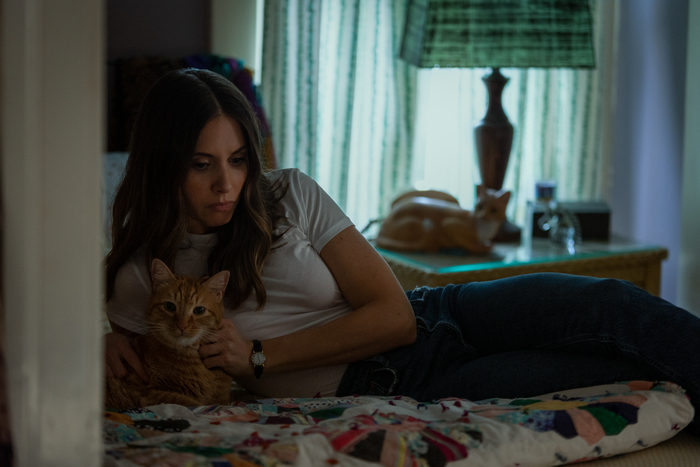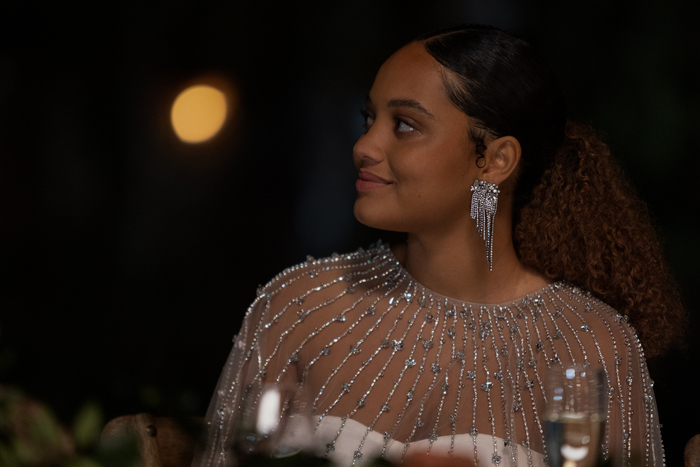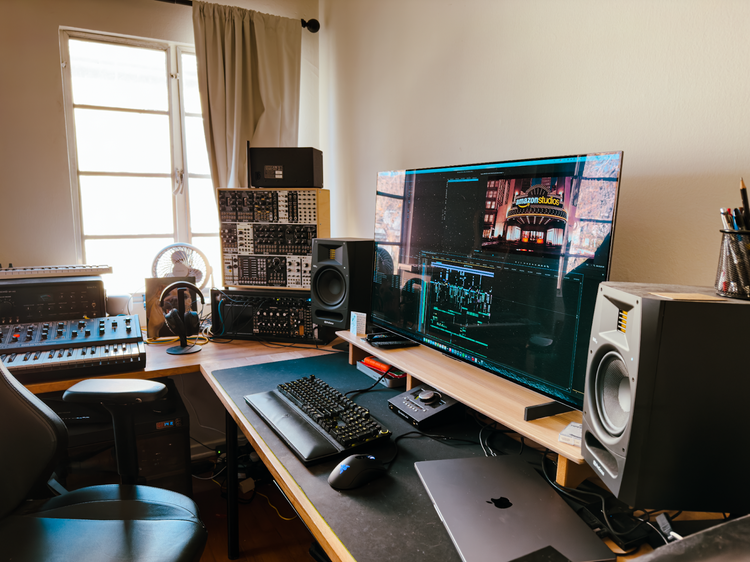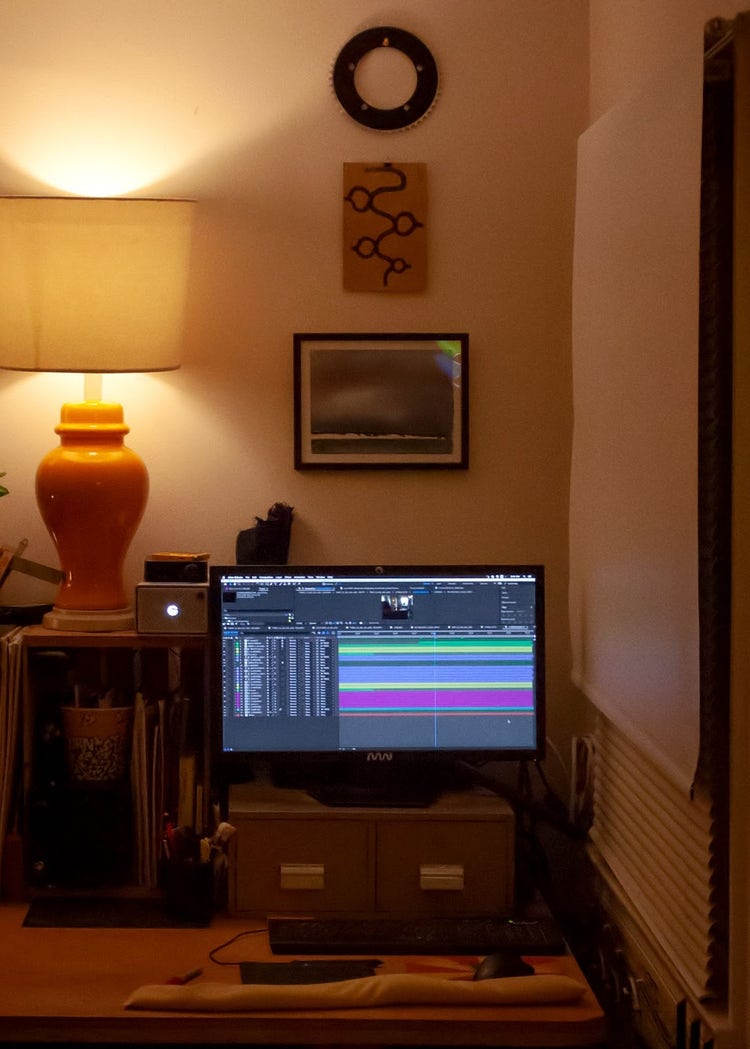Director Dave Franco’s sophomore film, Somebody I Used to Know, hit Amazon Prime Video on February 10. Starring Alison Brie, Kiersey Clemons and Jay Ellis, the much-anticipated film reimagines traditional rom-com tropes with a new take on a love triangle that finds all the characters falling for each other in one way or another. Shot in the Pacific Northwest and cut in Los Angeles by a small but mighty team, the filmmakers needed a set of tools that would allow them to work flexibly, efficiently and remotely, so they turned to Adobe Creative Cloud to bring this complicated love story to life.
Editor Ernie Gilbert is no stranger to Premiere Pro, having used it on FX’s Atlanta, music videos for numerous award-winning artists, and his Grammy-award winning work for Childish Gambino’s ‘This is America’. He and VFX artist Neil Lokken (Documentary Now!, I Think You Should Leave with Tim Robinson, Waffles + Mochi), working in After Effects, worked together to tell the story of three people trying to help themselves and each other figure out who they are, where they came from, and where they’re going. Together, alongside assistant editor Riley Adamson, their wide-range of experience made them the perfect team to craft a nuanced narrative feature that includes drama, humor, music, and a new spin on the classic love triangle.
“I think there ended up being just over 100 shots in the film,” stated Neil, “and I’m not sure it would have been possible for us without the fancy footwork going on behind the scenes in Adobe software.”
Somebody I Used to Know is now streaming on Amazon Prime Video. Read on to learn more about Ernie and Neil’s work on the film, their advice for aspiring filmmakers, and their favorite Creative Cloud tips.
https://www.youtube.com/watch?v=f497dkv3vfU
Ernie, how and where did you first learn to edit?
I first learned to edit in high school in our computer lab. I was taking some college classes in 2004 and one of them was a filmmaking class. I made a documentary about our ultimate frisbee team and from there, I was hooked.
Neil, how did you first get into VFX design? What drew you to it and what was the inspiration behind your VFX work on the film?
Curiosity! I remember first opening After Effects and having no idea what it was even for, but eager to learn because it was used in filmmaking. Then fast forward to when I was working a PA gig and got tossed a couple graphics/VFX shots to play around with. I found I had a knack for the tiny details that can go into each frame and was surprised how far I’d come from knowing nothing about the program. It inspired me to keep learning.
The goal for this film’s VFX was for it to be grounded in reality, stripped down to bare bones and as practical as possible. It didn’t suit the story to have flashy in-your-face visual effects. A good chunk of the VFX that was eventually employed was for screen comps, greenscreens, cleanup work, etc.
How do you begin a project/set up your workspace?
Ernie: I work from home so I’m already set up in my own workspace. To me, it’s important to have an organized project, to know where all the footage is and to be able to watch everything so I can react to it — not in a logical way but in an emotional way. I like to say that I spend so much time organizing that, by the time I actually cut, it’s very fast. I know where everything is and I can easily pull everything in like a painter would pull from a palette of colors.
How did you begin this project? Can you talk about the collaborative process with the director and editor, and the process of creating your work from start to finish?
Neil: I had done a little bit of work with both the director Dave Franco and editor Ernie Gilbert previously, and one day last year I got an email from Dave asking if I would be interested in doing VFX for his film. That felt like one of those opportunities you just can't say no to.
What made me feel confident that I could actually accomplish the undertaking was just how tight-knit and collaborative the post team was. I could very quickly get shot requests from Dave and Ernie, build upon temp VFX passes from the assistant editor, Riley Adamson, and quickly toss back all my drafts for approval or notes, sometimes all in the same day. The smaller team lent itself to a very quick and clear communication workflow.
Tell us about a favorite scene or moment from this project and why it stands out to you.
Ernie: The scene where Kiersey Clemons’ character, Cassidy, and her punk rock band perform is this monumental undertaking, because not only is it this defining moment for her relationship with Alison Brie’s character but it’s a defining moment with Jay Ellis’s character as well, all under the backdrop of this live music performance. So it was a really complicated edit in that we had to balance showcasing all of these big character moments while making it flow like a live concert would — there’s different audio, there’s tracking everybody’s emotions…it’s a lot of moving parts. [Cinematographer] Brian [Lannin] and Dave shot a lot of great options so we had a lot of flexibility but there was a lot to wrap my head around to figure out how to balance all of these competing needs. It was fun harkening back to my roots as a live concert editor in college and getting to pull from different areas of experience to make this come together. I really think people will enjoy the scene and find the humor in it.
Neil: Some of my favorite comps were from a scene where we added palm trees into the background to make it look more like sunny California than overcast Oregon (where the principal photography took place). Scouring through stock footage libraries for the “right” palm just wasn’t cutting it, so in frustration I walked around my neighborhood and filmed a bunch of trees and sent them to Dave and Ernie as a, “How about this?”. Those are now the palm trees in the film.
Is it bad to say we didn’t have many challenges? We were luckily blessed with a lot of time to explore and play. A lot of projects can get shortchanged on time. So much of editing is having the time to try something, to reflect on it, to feel it, to see if it’s still working, to change it and have time and space to see if it’s still working. There was some audio stuff from shooting on location in Portland, for example there was a river in the background and you can’t turn a river down, so that’s where we’d use the Essential Sound panel — the Reduce Noise and Reverb sliders — to clean it up ahead of going into the final mix.
One early challenge was convincing the studio that this film could be realistically accomplished with ostensibly just me as the visual effects artist. It helped that Dave had such a specific vision for the scope of the VFX that we were able to convince them in the end.
I’ve been cutting in Premiere Pro professionally since 2015. I knew going into this project that, if I was going to do it, Premiere was the tool I wanted to use. We chose Premiere Pro because I knew it would give me the flexibility and resources to attack the project holistically. Every editor works differently — I knew this process, having worked with Dave before, would be very hands-on and intentional, and that we would be trying a lot of different things in the offline edit - sound design, music, visual effects, etc — and Creative Cloud was just the right choice for that. We had all those tools. It allowed me to temp something out in Premiere, then transfer it to my AE to improve upon it, and then he could share that file with Neil so that Neil wasn’t starting from zero. It saved a lot of time, and because we were able to strip away some of the things that traditionally slow you down, we were able to explore more creatively.
99 percent After Effects, with plenty of bouncing between Photoshop/Premiere. After Effects is really more robust than just for motion graphics work and I wanted to push its limits for this film. It was also indispensable that I could quickly get a dynamic link or temp VFX project from editorial to get started on right away and not worry about timecodes/re-linking. I think there ended up being just over 100 shots in the film and I’m not sure it would have been possible for us without the fancy footwork going on behind the scenes in Adobe software.
It would be using markers on multi-cams. My assistant editor would put markers on multi-cams where there was an action or reset, so at any point I can match back to a clip and see “oh they did a series here” or “oh, this is the end of action.” Those things translate and carry throughout the entire process, so whether I’m looking at the footage initially in the dailies or I’m three months in the edit, I still can reference those, and they’re really good reminders that there’s something before this or after this. We would also include script notes and notes from Dave in the markers. It became our little rosetta stone to keep track of all the moving parts.
Jump in! It’s never been easier to get started, learn the details later. Use your phone to shoot something and spend hours in After Effects making it look cool or weird or cool because it’s weird. Then if the process catches you you're in trouble, but in the best kind of way.
I honestly don’t know if there’s a “who” so much as a “what”. I think for me creative inspiration comes from connecting and feeling. For example, last year there was a movie called Aftersun that kind of reset me emotionally. I’m inspired by things that connect me, or that give me access to community or nostalgia or emotion. The “who” is tough. I think I’m inspired by everybody around me.
Tough question. It’s invigorating surrounding myself with the incredible people I’ve worked with over the years. I also like looking outside TV and film for inspiration that could reflect itself back in interesting ways. Sometimes a building’s architecture can feel like a film as you walk through it. Also sunsets have the best colors. I eyedropper them all the time.
I think it’s that it’s often not the job you’re doing that’s hard, but navigating the different personalities as you do it. Everybody has a strong opinion, everybody wants to see their version of the best thing. It’s really about balancing different opinions, and as an editor especially, you’re often kind of the fulcrum point. For me, learning how to communicate efficiently, effectively and emotionally was important. At the end of the day you have to care, you have to connect with your material, and you have to connect with your collaborators. My advice is to be open to ideas. With the right tools and workflow, it can be faster to try an alt version than to talk about trying it. And even if it doesn’t work, it can still illuminate something new. And I find in those moments that’s where you can find really beautiful connections and there’s a serendipity sometimes to realizing that even if your idea didn’t work, you learned something new about the project; a different way forward.
It took me a long time to be ok with saying no to jobs. Which is particularly spooky given the nature of this gig-to-gig industry. But I also attribute some of the amazing variety of work I’ve been able to accomplish from saying yes to all I could, at least when I was first starting out. It’s tough, but I think there is a sweet spot in between the yes and no that’s valuable to find.
I’m lucky to have these two beautiful windows that look into the trees on the street. I can open them in the summer and feel the breeze coming through. A lot of post houses I work out of have no windows, so it’s nice to have that openness in my home space. And then I’ve just surrounded myself with modular synthesizers. So if I’m having trouble cracking a scene, I’ll just go noodle on those and it’s like therapy. I can reset my mind, like a palette cleanse, and it’s not really conducive to bringing those everywhere but when I’m working from home it’s nice to have.
This film was fully remote so my living room was my office.








